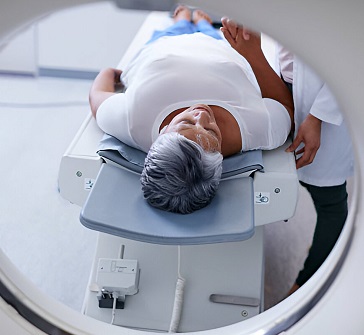 Book Appt.
Book Appt.
 Call Now
Call Now


Introduction
HIPEC (hyperthermic intraperitoneal chemotherapy) is a cancer treatment that targets tumors in the abdominal (peritoneal) cavity, which houses your liver, stomach, and other organs. Healthcare providers frequently employ HIPEC to treat cancer that has spread (metastasised) from another part of the body to the abdominal cavity. During hyperthermic intraperitoneal chemotherapy, surgeons remove cancerous tumours before administering hot chemotherapy medications into your abdominal cavity. HIPEC can not cure cancer, but it may help you live longer with it.
The treatment works by targeting microscopic cancerous cells in the abdominal cavity.
"Hyperthermic" means "heated" or "hot." Heat is cytotoxic, which means it kills cancer. According to research, heating certain chemotherapy medications increases their capacity to destroy cancer. During HIPEC, chemotherapeutic medicines are heated to 108 degrees Fahrenheit (41-43 °C).
"Intraperitoneal chemotherapy" refers to the chemotherapy in which a chemotherapeutic drug is directly injected into tumor cells in your abdominal cavity. HIPEC involves a continuous flow of heated chemotherapeutic chemicals that wash through your abdominal cavity.
Cancers are treated with HIPEC
HIPEC is commonly used by healthcare practitioners to treat various metastatic malignancies, including adrenal cancer, appendix cancer, colorectal cancer, liver cancer, ovarian cancer, and stomach cancer.
They may also use HIPEC to treat tumors that begin in the abdomen, such as primary peritoneal carcinoma, peritoneal mesothelioma, and pseudomyxoma pertonei.
Procedure
During the procedure
HIPEC is the second step in a two-part process. The first step is cytoreduction, a surgical procedure that removes malignant tumors and damaged tissue from your abdominal cavity. Below-mentioned steps are included in effective HIPEC treatment
You will be given general anesthesia, so you will not experience any pain during the procedure.
Your surgeon will make an incision in your abdomen to remove cancerous tumors and affected tissue.
When you are under anesthesia, the surgeon inserts a catheter through an abdominal incision.
The catheter (or catheters) will be connected to a machine that heats the chemotherapy to approximately 108 degrees Fahrenheit (41 degrees Celsius).
A pump will transport the chemotherapy through the catheter to the inside of your stomach.
Sometimes, the surgeon can move your body from one side to another side to ensure even distribution of heated chemotherapeutic drugs in the abdomen.
This treatment may take a few hours, which can differ depending on the amount of tumor cells.
Once your surgeon has finished treating you, they will drain the chemotherapy drugs from your abdomen and rinse it with saline.
Your surgeon will close any incisions that were made during the procedure.
After the procedure
That depends on your situation and the type of surgery used to remove the cancerous tumour. In rare situations, you may need to use a feeding tube to provide sustenance while your body recovers. That's because HIPEC uses massive doses of potent chemotherapy, which can impair intestinal function. Most people remain in the hospital for several days to two weeks following therapy.
Benefits
HIPEC provides some advantages over traditional chemotherapy:
You may experience fewer serious side effects because 90% of the chemotherapy remains in your abdominal cavity, and your body can safely absorb and eliminate the small amount that does seep out.
Cancer-killing drugs will be administered to an area of your body that systemic chemotherapy cannot or does not normally treat. Systemic chemotherapy, which flows throughout your body, cannot pass through your peritoneum barrier. This is the membrane that lines your abdominal cavity and protects the organs located there.
You can receive higher doses or more intense chemotherapy, which can eliminate more cancerous cells that remain after surgery.
You can complete treatment in one session instead of having multiple therapy sessions over several weeks.
Risks
All procedures have risks, including severe bleeding and infection. HIPEC hazards can vary based on the kind of malignancy and the chemotherapy medications used following surgery. If you undergo HIPEC, your surgeon will describe the dangers associated.
Side effects
Pain, nausea, vomiting, diarrhoea, constipation, bloating, weight loss, exhaustion, depression, and temporary loss of bowel function are all possible side effects of HIPEC treatment.
Conclusion
HIPEC is a combined method of cytoreductive surgery and hot chemotherapy. It improves management outcomes by removing visible tumors and delivering chemotherapy directly to the affected abdominal site. Further, this method has numerous advantages, such as increased drug efficacy due to heat, fewer systemic adverse effects, and the potential for higher long-term survival rates.
SHALBY Sanar International Hospitals provides extensive medical procedures backed up with our state-of-the-art technology and a team of highly qualified & experienced clinical experts.

Grade 2 Endometrium Cancer | Ms. Robiyakhon | Uzbekistan | Dr. Archit Pandit | SHALBY Sanar

Male Breast Cancer Recovery Story | Dr. Archit Pandit | Cameroon | SHALBY Sanar

Ms. Nafisa’s Inspiring Breast Cancer Recovery | Dr. Archit Pandit | Uzbekistan | SHALBY Sanar International Hospitals

Stage4 colon cancer is curable - Colon cancer with liver metastasis | Kenya | Dr Archit Pandit

Patient from Kenya Treated by Dr. Archit Pandit | SHALBY Sanar International Hospitals

Double Cancer Victory: Mrs. Salma Kapoor's Inspiring Recovery Story | Dr. Archit Pandit

Patient from Uzbekistan Treated by Dr. Archit Pandit | SHALBY Sanar International Hospitals

Patient from Uzbekistan Treated by Dr. Archit Pandit | SHALBY Sanar International Hospitals

Successful Carcinoma Buccal Mucosa Surgery of a Patient from Nigeria by Dr. Archit Pandit

Successful Colon Cancer Surgery of Mr. Faraidun Kaka Bra Amin Amin's from Iraq | Dr Archit Pandit

Miraculous Recovery of a patient from Uzbekistan battling Ovarian Cancer | Dr. Archit Pandit

Successful Cancer Detection & Surgery by Dr. Archit Pandit | SHALBY SHALBY Sanar International Hospitals

Successful Colon Cancer Treatment of a patient from Iraq by Dr Archit Pandit | Surgical Oncology

Successful Glottis Mass & Carcinoma Vocal Cord Treatment of a patient from Iraq by Dr Archit Pandit

Successful Stage 4 Colon Cancer Treatment of a patient from Kenya by Dr Archit Pandit

Surviving the Odds: 56-Year-Old's Journey with Recurrent Carcinoma Vocal Cord | Dr. Archit Pandit

Surviving Recto-Sigmoid Cancer: Mr. Syamand Ahmed's Inspiring Journey

Success Story: Iraqi Patient's Liver Tumour Treatment at SHALBY Sanar International Hospitals

Cytoreductive Surgery Success: Iraqi Patient's 30cm Ovarian Tumor Removed Safely

Beating Liver Cancer: Mr. Abdirashid's Inspiring Story

Ms. Nejood's Success Over Pancreatic Cancer: A Remarkable Journey

Transforming Smiles: Revolutionary Buccal Commando Procedure

Wide Local Excision Surgery & Microvascular Reconstruction of a Cancer patient

Successful Surgery of Esophgeal Cancer

Successful Lung Cancer Surgery of Ms. Jerioth Wanjiru from Kenya

Para Thyroidectomy on Pt Jawad Kadhim Tweli from Iraq

Dr Archit Pandit discusses the fascinating case of Geeta Rani
Our doctors pen down their research findings and experiences from time to time. Their words provide deep insight into the latest techniques, technologies and other advancements in healthcare. It provides expert answers to all kinds of health questions for real-life issues.
VIEW ALL




Since the day of its foundation, SHALBY Sanar International Hospitals is committed to provide comprehensive healthcare services. It regularly organizes awareness programs in its premises and encourages outdoor healthcare activities and camps with an intent to put focus on preventive healthcare.
VIEW ALL